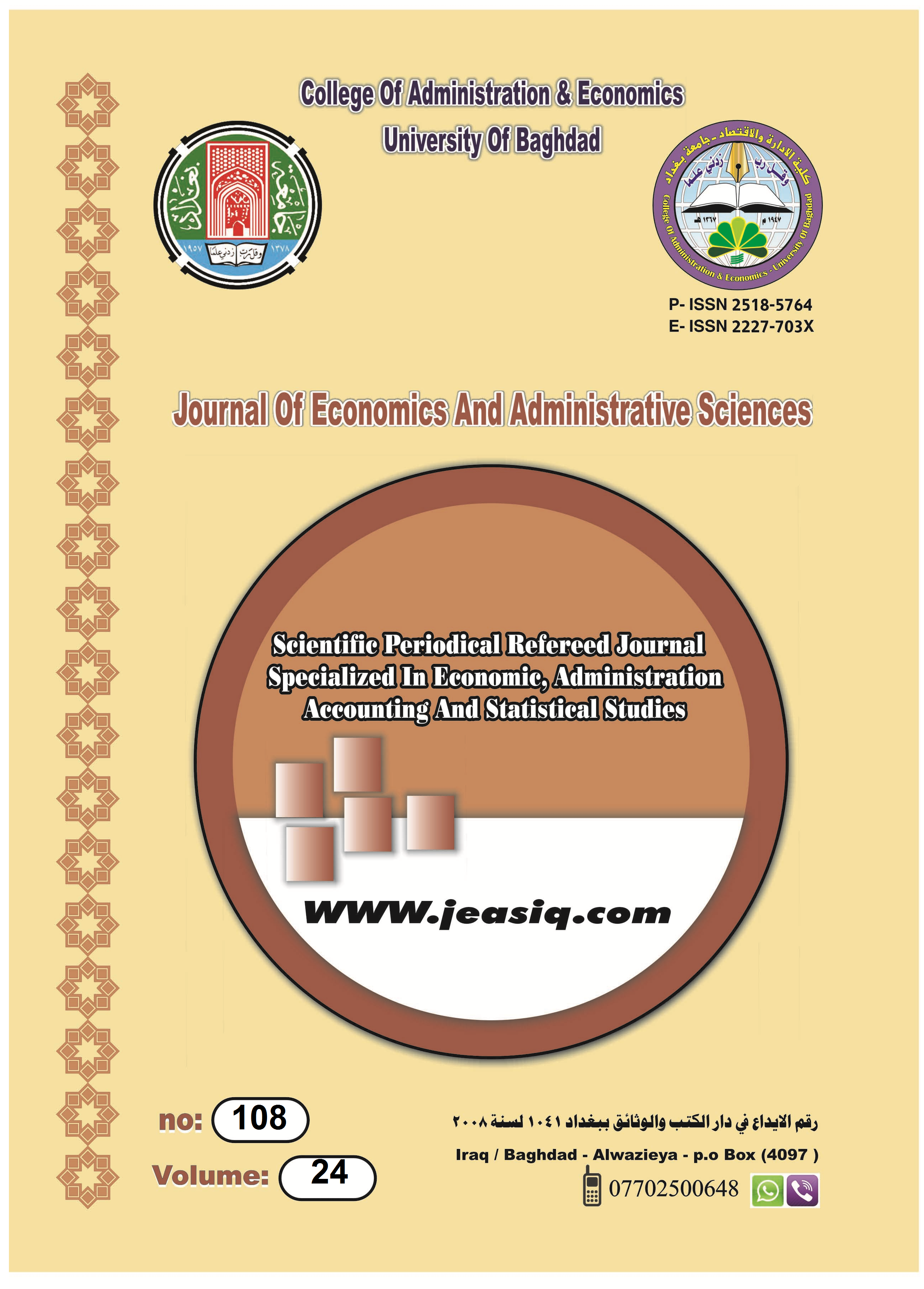Strategic orientation and its reflection on the Learning organization: Survey study of a sample of Makers decision the Iraqi Ministry of Communications
DOI:
https://doi.org/10.33095/jeas.v24i108.1319Keywords:
التوجه الاستراتيجي,المنظمة المتعلمةAbstract
The current research focuses on the extent to which the strategic orientation(entrepreneurial orientation, customer orientation, technology orientation, learning orientation, and investment orientation) affects the learning organization (building common vision, systemic thinking, personal dominance, mental models, team learning)The first hypothesis to test the connection relation between research variables and The second hypothesis was to test the relationship between these variables. In order to ascertain the validity of the hypotheses, the research was based on a questionnaire questionnaire prepared according to a number of In addition to building a fifth sub-variable for the strategic orientation (investment orientation) based on the theoretical sources in this regard, as well as personal interviews, 100 questionnaires were distributed to (70%) and using a number of descriptive and correlative methods (mean, Spearman and F). In addition to the Z test and the results were extracted using SPSS & amous, the research found a relationship Link The study ended with a set of conclusions and a number of recommendations, the most important of which is the reform of the ministry's procedures, decentralization, the empowerment of workers and the search for honest companies to sign contracts of participation or investment to increase the percentage of customers who use the technology of communication and the Internet.
Downloads
Downloads
Published
Issue
Section
License

This work is licensed under a Creative Commons Attribution-NonCommercial-NoDerivatives 4.0 International License.
Articles submitted to the journal should not have been published before in their current or substantially similar form or be under consideration for publication with another journal. Please see JEAS originality guidelines for details. Use this in conjunction with the points below about references, before submission i.e. always attribute clearly using either indented text or quote marks as well as making use of the preferred Harvard style of formatting. Authors submitting articles for publication warrant that the work is not an infringement of any existing copyright and will indemnify the publisher against any breach of such warranty. For ease of dissemination and to ensure proper policing of use, papers and contributions become the legal copyright of the publisher unless otherwise agreed.
The editor may make use of Turtitin software for checking the originality of submissions received.


























